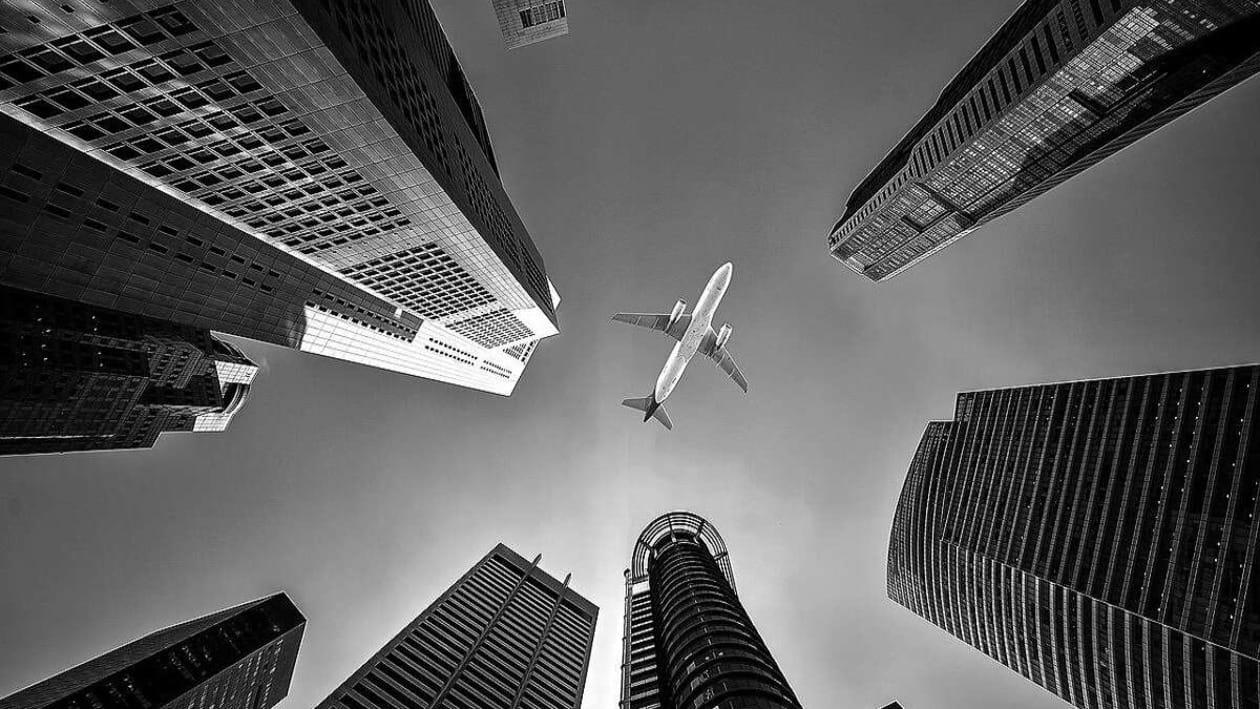As cases of coronavirus abate significantly and restrictions on travel are gone, the aviation sector has been witnessing signs of recovery in recent times.
Domestic air passenger traffic recovered in February after a sharp decline in the previous month as more people chose to travel by air amid the abating Omicron wave of coronavirus.
Airports in the country catered to 17.66 million passengers in the month, rising from 15.27 million in January, but lower than December’s 25.12 million, data from the Airports Authority of India (AAI) showed.
The contraction in domestic airlines’ passenger traffic, relative to the pre-Covid level, narrowed to 37.8 percent in February 2022 from 49.9 percent in January 2022 and stood at 44.3 percent in Apr-Feb FY22 as a whole. Going forward, the normalisation of scheduled flight operations is likely to benefit this sector, even as elevated ATF (aviation turbine fuel) prices will continue to pose a threat to profitability in the near term, said rating agency ICRA in a report.
ICRA estimates the all India passenger traffic to increase by 68-70 percent year-on-year (YoY) to 317-320 million in FY23. Domestic passenger traffic is expected to witness 64-66 percent YoY growth in FY23 and reach pre-Covid levels.
With the resumption of international commercial operations from March 27, 2022, after two years of ban due to pandemic, international traffic is expected to see a healthy growth of 100-105 percent YoY in FY23 and recover to pre-Covid levels in FY2024. In FY2022, the passenger traffic is estimated to increase by 62-64 percent YoY (on a lower base) to 187-189 million despite the temporary disruption in the form of Omicron, but supported by a healthy pace of vaccination, ICRA added.
The road ahead
Even as the sector sees its biggest challenge in the form of Covid-19 fading away, its road to recovery will remain bumpy in the next term due to headwinds including higher crude oil prices and intense competition.
The pandemic has abated but its effect will linger on the sector for the next one or two years, experts believe as many companies had to borrow hefty sums to survive the period of lockdowns.
The sharp rise in ATF is a fresh worry for the sector. As per a PTI report, Aviation turbine fuel (ATF) - the fuel that helps airplanes fly - was hiked by ₹2,258.54 per kilolitre, or 2 percent, to ₹1,12,924.83 per KL in the national capital - to an all-time high on April 1, thanks to a surge in global energy prices.
As per brokerage firm JM Financial, the government is mulling bringing ATF under the gambit of GST, this is likely to benefit airlines in the long run. However, airlines currently face a challenging time ahead on account of record-high ATF prices. Airlines have taken a significant price increase to offset a sharp surge in ATF prices.
Fuel accounts for 35-40 percent of an airline’s operating costs, thus airlines in India have decided to pass on the rising jet fuel cost to travelers over the past few days, leading to a sharp rise in airfares. It is expected that the current price increase won’t affect the recovery due to high pent-up demand, Santosh Meena, Head of Research, Swastika Investmart, observed.
"Fares on domestic sectors have already risen by up to 30 percent in the last six-eight weeks and are likely to grow even more. However, the ability of airlines to pass on rising fuel costs will diminish if the recovery led by pent-up demand loses momentum, putting pressure on the already-stressed airline balance sheets. In short term, this sector may experience turbulences and face some challenges but the longer-term outlook remains good," said Meena.
Asutosh K Mishra, Head of Research - Institutional Equity at Ashika Group is positive about the travel and hospitality sector post the complete withdrawal of all the Covid restrictions. However, he underscored the concerns around inflation.
"Our ground check suggests good demand from the wedding and corporate event segment in the coming months, which can further help the sector to achieve occupancy level of pre-Covid quarters along with improvement in the pricing scenario. We expect a relatively very lower impact of inflation in the first half of FY23. However, in case of inflation persists at a higher level for an extended period, we may see a cut back of allocation towards travel and hospitality," said Mishra.
Among the aviation stocks, JM Financial has a sell call on Indigo as it believes Indigo’s current market price factors the improving (expected) momentum in passenger demand.
"We believe the stock is likely to remain under pressure given (1) increasing competitive intensity from Tata Group-backed airline companies to impact market share, (2) margin pressure given a surge in ATF prices, and (3) decision of Rakesh Gangwal to step down from the board as he reduces his 36.6 percent stake in the company over the next 5+ years which is likely to cap stock performance," JM Financial said. The stock currently trades at expensive 10.1 times FY23E EV/EBITDAR, the brokerage pointed out.
Disclaimer: The views and recommendations made above are those of individual analysts or broking companies, and not of MintGenie.
